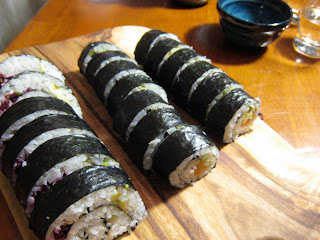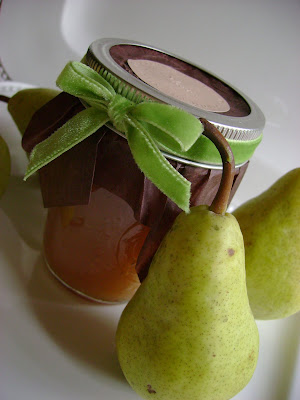
I’m often asked if my mother taught me how to bake. I’ve always been stumped as to how to answer this. Yes, my mother bakes too and enjoys it greatly, but she doesn’t really make things quite like the projects I’ve been posting. Usually, it’s me sharing recipes and tips with her instead of the other way around. We respectfully diverge on the best way to make a chocolate chip cookie or a piecrust. I’ve realized that it’s OK to admit that no my mother didn’t teach me to bake, but growing up with her example, she inspired, encouraged, and influenced me to appreciate things made from scratch. I think we have a similar curious spirit for wanting to make things ourselves and a generous heart for gifting treats away to any willing recipient.
A year or so ago, my mom decided to learn to make cannoli. She found a recipe, purchased the needed tools (cannoli forms—1 set each for my sister, herself, and me), and gathered the ingredients. Lots of fun phone calls between us ensued. I remember helping find a source for mascarpone down where she lives in Florida. But unfortunately, the cannoli just didn’t turn out to her liking. If she told you the reasons why it would sound like quite a disaster. The main turnoff probably was the fried smell that permeated her kitchen for several subsequent days. After hearing her disappointment, when I received my set of cannoli forms from her in the mail, I just tucked them toward the back of my baking drawer and didn't give it much more thought.
That is, until this month when…

I was excited to try my hand at finally making cannoli myself. Already my kitchen was diffuse with a fried food smell—I’ve been on a homemade doughnut kick lately, and I had all the tools I needed thanks to my Mom’s previous endeavor. Using a stand mixer and a pasta roller made short work of the dough component of the whole process. I cut smallish circles of dough to fit the narrow diameter of my cannoli forms. This yielded tiny, two-bite-sized pastries, about 60 if you counted. That’s a lot of dough to fry and a lot of cannoli to eat! For the filling, I made two slightly different batches. I opted to make my own
mascarpone (a first!) for the first batch and my own
ricotta (also a first!) for the second. For texture and taste, I hands down preferred the mascarpone. After each cannoli was filled and the photos were taken, I was left with a most pleasant predicament. How to distribute them to appreciating mouths? A better part of my week was spent delivering cannoli to friends (a cannoli fairy of sorts), and in the process I even happened to make a few new grateful acquaintances. Openhandedness is a trait, I will always absolutely attribute to receiving from my mother.
2 cups all-purpose flour
2 TBS sugar
1 tsp unsweetened baking cocoa powder
½ tsp ground cinnamon
½ tsp salt
3 TBS vegetable oil
1 tsp white wine vinegar
Approximately ½ cup sweet Marsala or any white or red wine you have on hand
1 large egg, separated (you will need the egg white but not the yolk)
canola oil for frying – about 2 quarts
½ cup toasted, chopped pistachio nuts
½ cup shaved chocolate
CANNOLI FILLING
2 lbs
mascarpone (or
ricotta) cheese, drained
1⅔ cups cup confectioner’s sugar, sifted
½ tsp ground cinnamon
seeds scraped from one vanilla bean
grated zest of one small to medium orange
DIRECTIONS FOR SHELLS:
1. In the bowl of an electric stand mixer or food processor, combine the flour, sugar, cocoa, cinnamon, and salt. Stir in the oil, vinegar, and enough of the wine to make a soft dough. Turn the dough out onto a lightly floured surface and knead until smooth and well blended, about 2 minutes. Shape the dough into a ball. Cover with plastic wrap and let rest in the fridge from 2 hours to overnight.

2. Divide the dough into 4 equal pieces. Starting at the middle setting, run one of the pieces of dough through the rollers of a pasta machine. Lightly dust the dough with flour as needed to keep it from sticking. Pass the dough through the machine repeatedly, until you reach the highest or second highest setting. The dough should be about 4 inches wide and thin enough to see your hand through
3. Continue rolling out the remaining dough. If you do not have enough cannoli tubes for all of
the dough, lay the pieces of dough on sheets of plastic wrap and keep them covered until you are ready to use them.
4. Cut out 3 to 5-inch circles (3-inch – small/medium; 4-inch – medium/large; 5-inch;- large. Mine are ~3 inches). Roll the cut out circle into an oval, rolling it larger and thinner if it’s shrunk a little.
5 Oil the outside of the cannoli tubes. Roll a dough oval from the long side around each tube/form and dab a little egg white on the dough where the edges overlap. (Avoid getting egg white on the tube, or the pastry will stick to it.) Press well to seal. Set aside to let the egg white seal dry a little.

6. In a deep heavy saucepan, pour enough oil to reach a depth of 3 inches. Heat the oil to 375°F, or until a small piece of the dough or bread cube placed in the oil sizzles and browns in 1 minute. Have ready a tray or sheet pan lined with paper towels or paper bags.
7. Carefully lower a few of the cannoli tubes into the hot oil. Do not crowd the pan. Fry the shells until golden, about 2 minutes, turning them so that they brown evenly.
8. Lift a cannoli tube with a wire skimmer or large slotted spoon, out of the oil. Using tongs, grasp the cannoli tube at one end. Very carefully remove the cannoli tube with the open sides straight up and down so that the oil flows back into the pan. Place the tube on paper towels or bags to drain. Repeat with the remaining tubes. While they are still hot, grasp the tubes with a potholder and pull the cannoli shells off the tubes with a pair of tongs, or with your hand protected by an oven mitt or towel. Let the shells cool completely on the paper towels. Place shells on cooling rack until ready to fill.
9. Repeat making and frying the shells with the remaining dough. If you are reusing the cannoli tubes, let them cool before wrapping them in the dough.

DIRECTIONS FOR FILLING:
1. Line a strainer with cheesecloth. Place the mascarpone (or ricotta) in the strainer over a bowl, and cover with plastic wrap and a towel. Weight it down with a heavy jar, and let the mascarpone drain in the refrigerator for several hours to overnight.
2. In a bowl of an electric mixer, beat mascarpone until smooth and creamy. Beat in confectioner’s sugar, cinnamon, vanilla beans, and orange zest and blend until smooth. Transfer to pastry bag fitted with a decorative tip. Chill until firm. (The filling can be made up to 24 hours prior to filling the shells. Just keep refrigerated in an air tight container).
ASSEMBLE THE CANNOLI JUST BEFORE SERVING:
1. Insert the tip of the filled pastry bag in the cannoli shell and squeeze gently until the shell is half filled. Turn the shell and fill the other side.
3. Press or dip each end of the filled cannoli into the chopped pistachios and chocolate shavings.















 SPIRAL SUSHI ROLL
SPIRAL SUSHI ROLL












